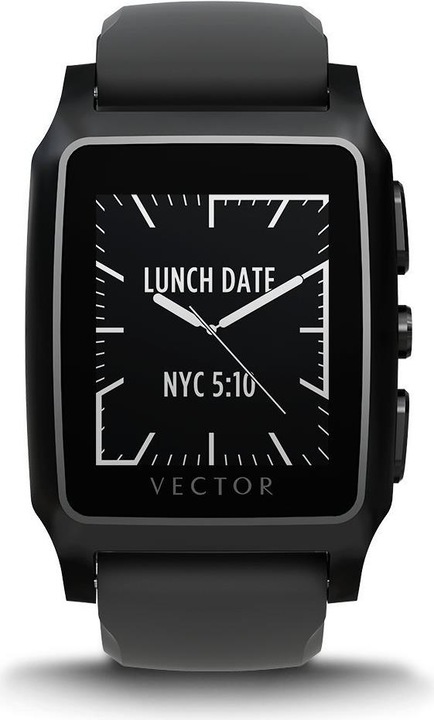

Yesterday dreams of the future, today reality
Futuristic technologies are often staged in films and television. Some of the invented devices inspire inventors and engineers and make the leap from fiction to reality. Here are five things from your everyday life that were invented by science fiction.
1. the mobile
Remember the mobile phone that was so cool because it flipped open?

The Motorola StarTAC was the coolest device of all time. The first model was launched on 3 January 1996. The first version of the mobile could even receive text messages. It was also one of the first mobiles that could vibrate. And it had a green light that symbolised the connection to the mobile network!
Martin Cooper, engineer and pioneer of wireless communication, worked for the technology company Motorola for 29 years before inventing the mobile phone. In retrospect, he has often been asked how he came up with the idea of inventing a wireless phone. Probably the best-known myth is that he was inspired by the communicator in the series "Star Trek".
This is not quite true, as Martin "Marty" Cooper says. He had already worked at Motorola for many years until "Star Trek" flickered across domestic TV screens. It was part of Motorola's company philosophy that personal communication with a handset was the most immediate. If he was inspired by anything, Cooper says, it was the comic series "Dick Tracy". In the series, the eponymous detective has a wristwatch with which he can communicate with others in sound and vision.
2. the smart watch
The Apple Watch has just undergone an update. Other manufacturers are following suit, including Motorola, Casio and Samsung.
.
If you read #1 above, you know that the inspiration for the smartwatch is ancient. The main inspiration from more recent times is, of course, none other than Michael Knight (David Hasselhoff) from the series Knight Rider.

The watch used by the Foundation for Law and the Constitution, for which Michael Knight worked, was little more than an intercom. The show high-resolution images of the series and replicas. In addition to the "Engage" function at the top, the watch had an analogue radio (technology from 1906). K.I.T.T., on the other hand, is a technological masterpiece that is still unrivalled
.
3. voice recognition and control by voice
"Siri, what time is it", users around the world ask their iPhones and iPads. "Okay, Google, what time is it", ask Android users and Amazon's Echo users ask "Alexa, what time is it". The computer, sometimes a mobile, sometimes a clock, sometimes a tablet and sometimes a kind of cylinder that stands around decoratively in the room. In short: our technology talks to us today. So it's not just "Understood, execute command", it's listening to us.
Comes from "Star Trek"? Wrong. Decades earlier, in 1945, Isaac Asimov invented a talking computer called "The Brain" in his short story "Escape!". The devices were dreams of the future and were regarded by contemporaries as dull or totally impractical. From the point of view of Swiss German speakers, they still are today, because it will be a long time before Siri and co. can speak a bit of Swiss German, but German and English already work quite well.
The first time HAL 9000, the central computer in Stanley Kubrick's "2001: A Space Odyssey", was really practical. The film was released at the same time as Star Trek: The Original Series, but back then Captain Kirk and his crew were nowhere near the cult status they have today. Kubrick's film, on the other hand, hit like a bomb and is still one of the great works of the genre and cinema history today.
4. the USB stick

This time it was Star Trek. But not the crew of James T. Kirk, but that of Jean-Luc Picard. In "Star Trek: The Next Generation", the crew members of the USS Enterprise-D, a successor to Kirk's Enterprise, have so-called isolinear chips. These devices, about the size of a thumb, are used as data storage devices. The technology is also used in the series' tablets - called Personal Access Display Devices or PADDs - as hard drives. As the inside of the isolinear chips is very delicate, they are covered in futuristic green plastic for use outside of a sterile environment.
5. the automatic vacuum cleaner
Have you seen the video of the cat in the shark costume chasing a small duck and sitting on an automatic hoover? Not?
The automatic hoover is probably one of the best inventions in the household, because vacuuming is annoying and makes a huge ruckus. The brand name Roomba has become synonymous with the solution to the problem. The automatic hoover, which is just big enough for your pet to sit on comfortably, vacuums your home while you're at work. The Roomba automatically manoeuvres around obstacles and some models even have no problem with low doorsteps.
When it comes to simplifying life in the home, no series has inspired the world's inventors more than "The Jetsons". The animated series from the 1960s about a family living in the distant future not only has the first automatic hoover, but practically everything in the household is automated. Much of this is reality or is about to become reality: Flying cars, drones and much more. But the most widespread household assistant is and remains the Roomba, which helps 10 million customers around the house. <p
Journalist. Author. Hacker. A storyteller searching for boundaries, secrets and taboos – putting the world to paper. Not because I can but because I can’t not.


